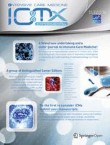Volume infusion cooling increases end-tidal carbon dioxide and results in faster and deeper cooling during intra-cardiopulmonary resuscitation hypothermia induction
Intra-arrest hypothermia induction may provide more benefit than inducing hypothermia after return of spontaneous circulation. However, little is understood about the interaction between patient physiology and...
